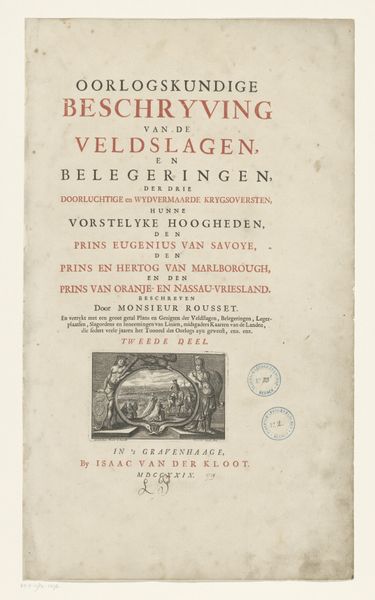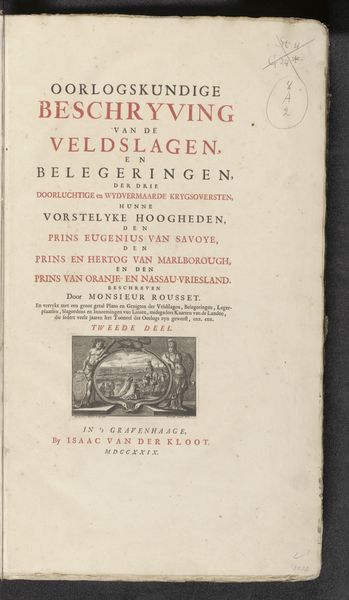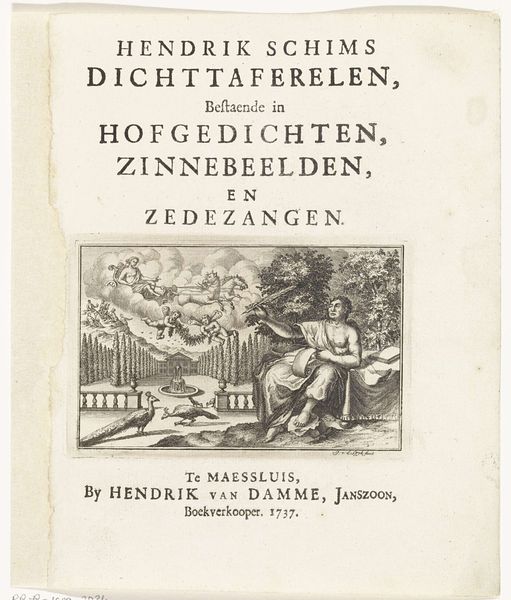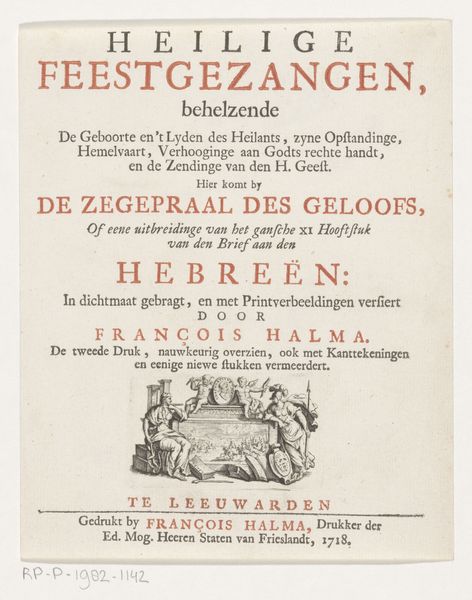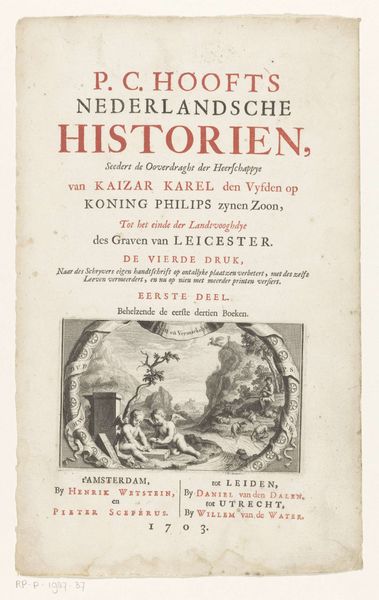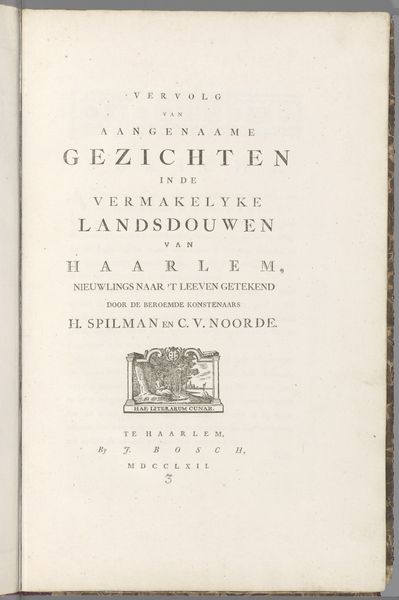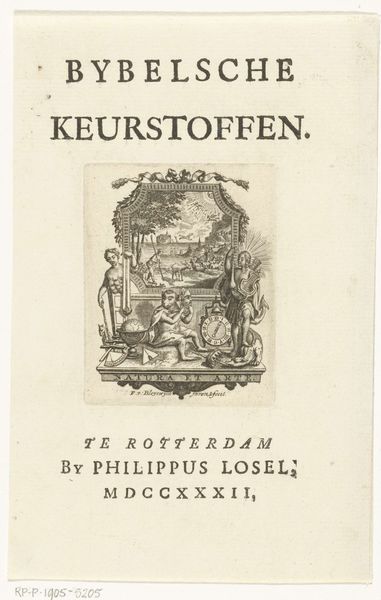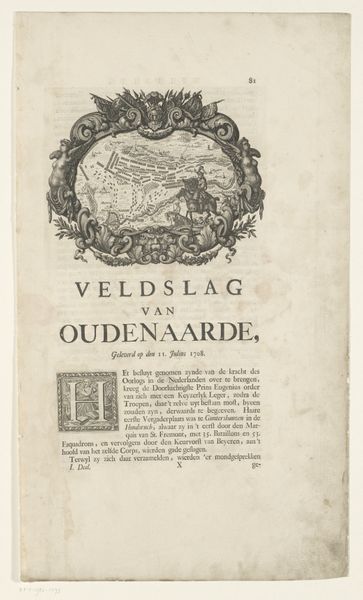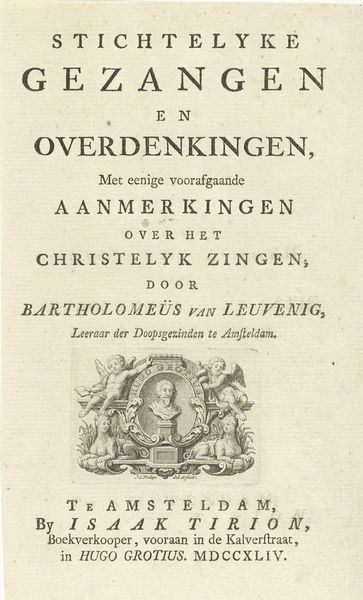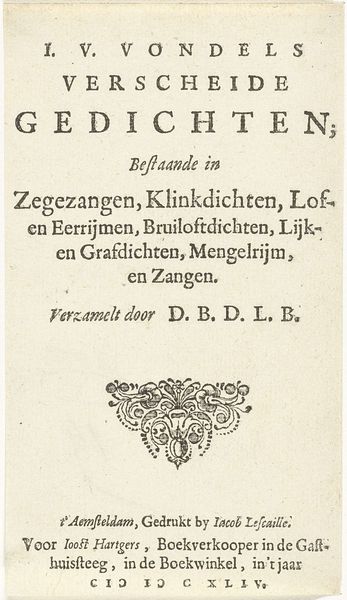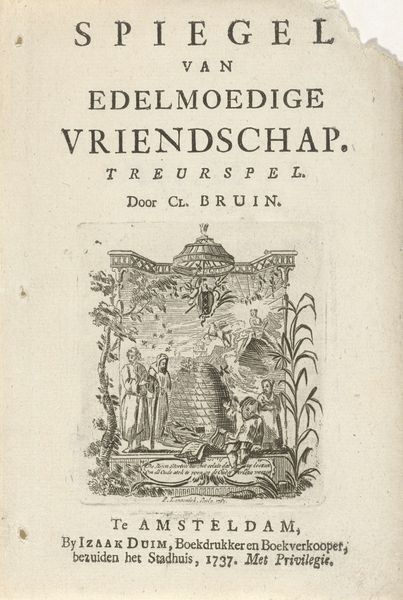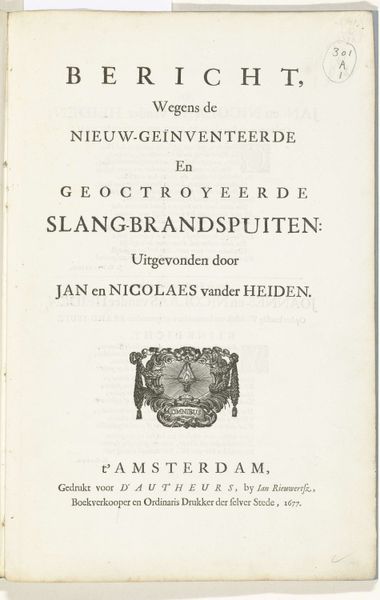
print, typography, engraving
#
portrait
#
baroque
#
dutch-golden-age
# print
#
typography
#
engraving
Dimensions: height 73 mm, width 108 mm, height 269 mm, width 204 mm
Copyright: Rijks Museum: Open Domain
Curator: At first glance, this piece, rendered in precise engravings, strikes me with its peculiar blend of austere typography and ornamental exuberance. The portrait almost seems secondary, caught within the frame of those lavish Baroque flourishes. Editor: I think it's more than just a portrait. We're looking at the title page for "J. Vollenhove's Kruistriomf en Gezangen"— Vollenhove's "Triumph of the Cross and Songs"—printed in 1750. The artist credited is Pieter Tanjé. It's fascinating how title pages functioned in this period. Curator: Absolutely, it encapsulates the book’s essence. Notice the red ink, reserved for key information, like the title. What do you make of the imagery framing Vollenhove? Editor: The two cherubs definitely signify spiritual undertones, they represent innocence. The draped woman is meant to represent abundance; the iconography implies Vollenhove's songs promise both spiritual enlightenment and earthly rewards. The acanthus leaves symbolize enduring life or immortality and artistic skill. These elements form a complex tableau celebrating piety and artistry. Curator: Precisely! But also consider this piece in the context of 18th-century Dutch society. The privilege statement declares that the work is being produced with the protection of the States of Holland and West Friesland. Think about the implications; it was vital in ensuring against copyright infringement and guaranteeing the printer's livelihood, given the market demands of the period. It also granted Gaillard considerable social standing. Editor: I see how this connects artistic freedom and the socio-economic infrastructure of the period. It really elevates the way we percieve even a "simple" title page like this. It isn’t just decoration; it’s a marker of status. Curator: And even cultural impact, one can say, which is something to be prized beyond mere technical skill. I find myself seeing these details within a network of historical influence and power, one can say. Editor: Agreed, it is so much more than mere lines and typography!
Comments
No comments
Be the first to comment and join the conversation on the ultimate creative platform.
